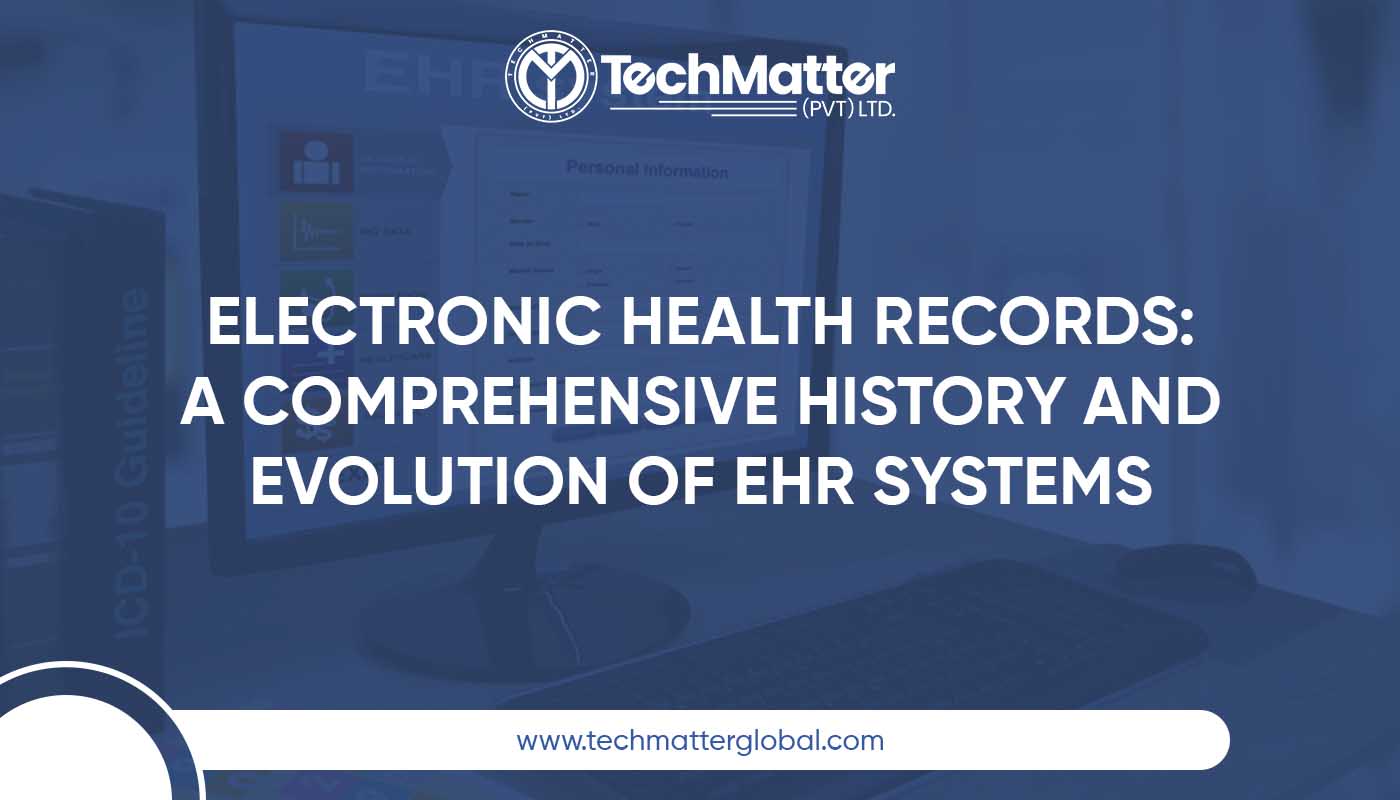In today’s fast-paced healthcare environment, information is everything. From improving diagnoses to enhancing patient outcomes, the flow of accurate and timely data can make or break a healthcare system. At the core of this digital transformation lies a powerful tool: electronic health records (EHRs). But how did we get here? What began as paper notes scribbled on charts has now become a critical component of modern medicine.
Whether you’re a hospital executive, private clinic manager, or health IT decision-maker, understanding the history of EMR systems and the potential of digital health record solutions is key to staying competitive, efficient, and compliant in the healthcare industry.
Let’s explore how EHRs evolved, where they stand today, and—most importantly—how your organization can leverage them to not only improve patient care but also gain a competitive business advantage.
From Paper Charts to Digital Powerhouses: A Historical Look
Before computers were commonplace in healthcare, patient records were stored in bulky folders, piled high in filing cabinets. These paper-based records were not only inefficient but also prone to loss, damage, and misinterpretation.
The shift began in the 1960s when large institutions like the Mayo Clinic and Lockheed Corporation started experimenting with storing patient data electronically. These early efforts were clunky and limited, but they planted the seed for what would eventually become full-scale electronic health records.
In the 1970s and 1980s, as computer technology advanced, hospitals began investing in digital health record systems to streamline administrative tasks like billing and scheduling. It wasn’t until the 1990s, however, that clinical data began to be integrated. This was the turning point when EHRs began to show true clinical value.
The Impact of the HITECH Act: Mass Adoption
A real game-changer arrived in 2009 with the introduction of the Health Information Technology for Economic and Clinical Health (HITECH) Act in the U.S. This legislation provided financial incentives to hospitals and healthcare providers to adopt certified EHR technology. Adoption skyrocketed. What was once a niche investment became a healthcare industry standard.
But this wasn’t just about going paperless—it was about redefining how healthcare data was stored, accessed, and used. Interoperability, data sharing, real-time updates, and patient engagement all became central goals of these systems.
Modern-Day EHRs: More Than Just Digital Filing Cabinets
Today’s electronic health records are sophisticated platforms designed to support the entire continuum of care. They go far beyond digitizing paper charts. With features like clinical decision support, predictive analytics, and patient portals, EHRs empower providers to deliver faster, safer, and more personalized care.
Here’s what a modern digital health record system typically includes:
- Real-time charting: Instant access to patient history, labs, imaging, and medications.
- Clinical alerts and reminders: Helping physicians avoid errors and follow best practices.
- Integration with labs and pharmacies: Seamless order and result tracking.
- Patient engagement portals: Allowing patients to view test results, request refills, or message providers.
Not only does this integration add value for clinicians it changes the game for patients. Just picture it: emergency room doctors can immediately access your medical history, allergies and prior treatments. This is more than convenience it’s potentially life saving.
Why EHRs Matter for Healthcare Organizations Today
If you’re running a healthcare business, you already know that efficiency, compliance, and patient satisfaction are your top priorities. Here’s how implementing or optimizing electronic health records can help you lead in those areas:
- Improved Workflow Efficiency: Automating routine tasks frees up staff to focus on patient care.
- Data-Driven Decisions: With structured data, you can analyze trends, reduce costs, and improve outcomes.
- Regulatory Compliance: Modern EHRs are designed to meet HIPAA and other legal standards, helping reduce the risk of audits or fines.
- Better Patient Retention: Engaged patients are loyal patients. EHRs with strong portal capabilities improve communication and transparency.
- Competitive Advantage: Showcasing digital innovation can attract tech-savvy patients and younger medical professionals.
The Competitive Edge for Clinics and Hospitals
Let’s face it—healthcare is a business, and like any business, you need to stay ahead. Organizations that embrace the latest in digital health record technology are better positioned to thrive in an increasingly data-driven industry.
Whether it is better patient experiences, lower overhead costs, or more accurate reporting, the ROI of a high-quality EHR account is undeniable. Even better, using your EHR to look at data and population health can even lead to new revenue streams from value-based contracts and research partnerships.
How Techmatter Global Can Help
At Techmatter Global, we understand that choosing the right electronic health records system isn’t just a tech decision—it’s a strategic move that affects your entire organization. From consultation and system selection to implementation, training, and long-term support, we offer comprehensive solutions tailored to your unique needs.
We don’t just help you adopt an EHR we help you unlock its full potential. Whether you’re a small private practice or a large healthcare network, we make sure your EHR works for you, not the other way around.
Ready to take your digital transformation to the next level? Our experts are just a click away. Contact Techmatter Global Today to schedule a free EHR readiness consultation.
Looking Ahead: The Future of Digital Health Records
What’s next for EHRs? Think artificial intelligence, voice recognition, and predictive health alerts. Future systems will be smarter, faster, and more proactive. Instead of simply storing data, they’ll anticipate problems and suggest solutions. And with the growing focus on interoperability and patient ownership of data, the digital health record of tomorrow will be a dynamic, interactive tool accessible across borders and devices.
The future isn’t just digital it’s intelligent, connected, and patient-centered.
Final Thoughts
The history of EMR systems illustrates a journey that progresses from fragmented, paper-based chaos to impactful, intelligent digital ecosystems. Electronic health records are now more than just a tool they are strategic assets that can positively influence every facet of your healthcare organization. As the healthcare landscape evolves, the question isn’t whether you should invest in EHRs, but how soon you can fully leverage their power.

Leave a Reply